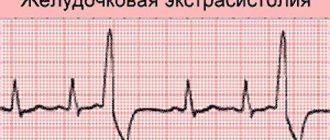Sepsis is a potentially life-threatening condition caused by the body's response to infection. The body typically releases chemicals into the blood to fight infection. Sepsis occurs when the body's response to these chemicals is disrupted, causing changes that can impair the function of many organs.
If sepsis progresses to septic shock, blood pressure drops sharply. This can lead to death.
Sepsis is caused by infections and can happen to anyone. Sepsis is most common and most dangerous for:
- Old people
- Pregnant women
- Children under 1 year old
- People with chronic diseases such as diabetes, kidney disease, lung disease, or cancer
- People with weakened immune systems
In the early stages, sepsis is treated with antibiotics and lots of IV fluids to increase the chances of survival.
- What are the signs and symptoms of sepsis?
- What is septic shock?
- What complications can there be from sepsis?
- How is sepsis diagnosed?
Causes of sepsis
Doctors in oncology clinics are tasked with monitoring the condition of patients, the ability to recognize primary symptoms in cancer patients and timely implementation of effective therapy.
The Medscan clinic provides all the necessary measures for the treatment of cancer patients with the development of sepsis. The laboratory is equipped with everything necessary to conduct a blood test for bacterial endotoxin, study the activity of endotoxin in the blood and differential diagnostics for the activity of Gr-flora. The level of procalcitonin is also determined in laboratory conditions. Comprehensive diagnostics makes it possible to identify patients who are at high risk by identifying sepsis in the initial stages of progression.
Sepsis in malignant tumors develops against the background of the following predisposing factors:
- Nosocomial infection
. Cancer patients stay in clinics for a long time. Even with strict adherence to the established rules of antiseptics and asepsis, absolute sterility is impossible to achieve. Pathogenic microorganisms circulate in medical institutions, which are especially dangerous, because due to constant contact with antibiotics, they develop resistance to them. - Drug therapy
. Cancer drugs have a negative effect on all cells that multiply rapidly, regardless of their malignancy. Because of this, complications develop, among which the most common is a decrease in the body’s protective functions.
The cause of sepsis is the weakened body of patients. If you have cancer, you may have problems eating. As a result, immunity decreases. Deterioration of anti-infective protection occurs after intraoperative tissue trauma, after chemotherapy and radiation therapy against the background of cancer.
Surgeries are often performed for cancer, which significantly worsens the situation if there is a predisposition to sepsis. The problem can begin even after a regular injection, not to mention abdominal surgical interventions on the esophagus, lung, intestines, and stomach. In 50% of cases after surgical interventions in cancer patients, a pronounced disturbance in nutritional status is observed.
Is express analysis possible?
get tested for antibodies at home. For example, Leccurate SARS-CoV2 Antibody Test allows you to independently perform a chromatographic immunoassay of blood. You can take it either from a finger or from a vein, although the second method is difficult to implement without a nurse. It is better to undergo express diagnostics for antibodies on an empty stomach . The kit includes a disposable lancet for puncturing the skin.
The blood is placed into the well of the test device, where it is mixed with a buffer liquid. The indicator reaction occurs within 10-20 minutes. Depending on the staining of certain areas, the presence of IgM, IgG or their absence can be detected.
Types of sepsis
Bacteremia is characterized by the presence of bacteria in a person's blood, which are detected by blood culture. Develops against the background of anthrax, tularemia and typhoid fever. In meningitis and pneumonia, bacteremia is a severe form of complication.
Septicemia develops when the bacteria enters the bloodstream and the body reacts too violently. There are two types of this condition:
- Septicopyemia
. Accompanied by the appearance of ulcers throughout the body. The patient's condition worsens. - Septic shock
. A severe form of sepsis, which is accompanied by dysfunction of the cardiovascular system and deterioration of the blood supply to internal organs. As a result, the body does not receive the required amount of oxygen and ceases to function normally. Patients with septic shock often die.
Sepsis is accompanied by various symptoms, which can be expressed to varying degrees. Due to its subtle symptoms, this condition can be difficult to recognize because it shares similarities with other conditions such as anaphylactic shock, pulmonary embolism, heart attack and stroke.
Doctors have identified a number of criteria with the help of which it is possible to diagnose early septicemia and take therapeutic measures:
- body temperature above 38°C or below 36°C;
- increased heart rate – more than 90 beats/min;
- increase in respiratory rate more than 20 per minute;
- a decrease in the level of white blood cells less than 4000 or an increase to 12000 per liter or more;
- increase in partial pressure of carbon dioxide to 32 mm Hg. Art. and more.
A rapid qSOFA score has been developed to identify existing criteria for sepsis. If 2-3 items from the list above are present, then a suspicion arises that requires immediate diagnostic and treatment measures.
The main symptoms of sepsis include increased body temperature, excessive sweating, increased heart rate and rapid breathing. The patient's condition deteriorates sharply, blood pressure decreases, and consciousness becomes confused. The lower and upper extremities become cold, and the lips become bluish. This is followed by dysfunction of internal organs. When the lung is damaged, respiratory failure and shortness of breath are noted; when kidney dysfunction occurs, the daily volume of urine decreases.
Course of septic shock
In septic shock, hypercytokinemia increases the activity of nitric oxide synthetase in endothelial and other cells. As a result, the resistance of resistive vessels and venules decreases. A decrease in the tone of these microvessels reduces overall peripheral vascular resistance. During septic shock, some of the body's cells suffer from ischemia caused by peripheral circulatory disorders. Peripheral circulation disorders in sepsis and septic shock are consequences of systemic activation of endothelial cells, polymorphonuclear neutrophils and mononuclear phagocytes.
Inflammation of this origin is purely pathological in nature and occurs in all organs and tissues. A critical drop in the number of structural and functional elements of most effector organs is the main link in the pathogenesis of the so-called multiple system failure.
According to traditional and correct ideas, sepsis and a systemic inflammatory response are caused by the pathogenic action of gram-negative microorganisms.
In the occurrence of a systemic pathological reaction to invasion into the internal environment and blood of gram-negative microorganisms, the decisive role is played by:
• Endotoxin (lipid A, lipopolysaccharide, LPS). This heat-stable lipopolysaccharide forms the outer coating of gram-negative bacteria. Endotoxin, acting on neutrophils, causes the release of endogenous pyrogens by polymorphonuclear leukocytes.
• LPS-binding protein (LPBP), traces of which are determined in plasma under physiological conditions. This protein forms a molecular complex with endotoxin that circulates in the blood.
• Cell surface receptor of mononuclear phagocytes and endothelial cells. Its specific element is a molecular complex consisting of LPS and LPSSB (LPS-LPSSB).
Currently, the frequency of sepsis caused by invasion of gram-positive bacteria into the internal environment is increasing. The induction of sepsis by Gram-positive bacteria is usually not associated with their release of endotoxin. Peptidoglycan precursors and other wall components of Gram-positive bacteria are known to trigger the release of tumor necrosis factor-alpha and interleukin-1 by immune cells. Peptidoglycan and other components of the walls of gram-positive bacteria activate the complement system through the alternative pathway. Activation of the complement system at the whole body level causes systemic pathogenic inflammation and contributes to endotoxicosis in sepsis and the systemic inflammatory response.
It was previously thought that septic shock was always caused by endotoxin (a lipopolysaccharide of bacterial origin) released by gram-negative bacteria. It is now generally accepted that less than 50% of cases of septic shock are caused by Gram-positive pathogens.
Disorders of peripheral circulation during septic shock, adhesion of activated polymorphonuclear leukocytes to activated endothelial cells - all this leads to the release of neutrophils into the interstitium and inflammatory alteration of cells and tissues. At the same time, endotoxin, tumor necrosis factor-alpha, and interleukin-1 increase the formation and release of tissue coagulation factor by endothelial cells. As a result, mechanisms of external hemostasis are activated, which causes fibrin deposition and disseminated intravascular coagulation.
Arterial hypotension in septic shock is mainly a consequence of a decrease in total peripheral vascular resistance. Hypercytokinemia and an increase in the concentration of nitric oxide in the blood during septic shock causes dilatation of arterioles. At the same time, through tachycardia, the minute volume of blood circulation increases compensatoryly. Arterial hypotension in septic shock occurs despite a compensatory increase in cardiac output. Total pulmonary vascular resistance increases during septic shock, which can be partly attributed to the adhesion of activated neutrophils to activated endothelial cells of the pulmonary microvessels.
The following main links in the pathogenesis of peripheral circulatory disorders in septic shock are distinguished:
1) increased permeability of the microvascular wall;
2) an increase in microvascular resistance, which is enhanced by cell adhesion in their lumen;
3) low response of microvessels to vasodilating influences;
4) arteriolo-venular shunting;
5) drop in blood fluidity.
Hypovolemia is one of the factors of arterial hypotension in septic shock.
The following causes of hypovolemia (a drop in cardiac preload) in patients in a state of septic shock are identified:
1) dilatation of capacitive vessels;
2) loss of the liquid part of the blood plasma in the interstitium due to a pathological increase in capillary permeability.
It can be assumed that in most patients in a state of septic shock, the drop in oxygen consumption by the body is mainly due to primary disorders of tissue respiration. In septic shock, moderate lactic acidosis develops with normal oxygen tension in the mixed venous blood.
Lactic acidosis in septic shock is considered to be a consequence of decreased pyruvate dehydrogenase activity and secondary accumulation of lactate, rather than a decrease in blood flow in the periphery.
Peripheral circulatory disorders in sepsis are systemic in nature and develop with arterial normotension, which is supported by an increase in minute volume of blood circulation. Systemic microcirculation disorders manifest themselves as a decrease in pH in the gastric mucosa and a decrease in oxygen saturation of blood hemoglobin in the hepatic veins. Hypoergosis of intestinal barrier cells, the action of immunosuppressive links in the pathogenesis of septic shock - all this reduces the protective potential of the intestinal wall, which is another cause of endotoxemia in septic shock.
What is sepsis and what is not?
There is a difference between a normal infection and sepsis. The infectious process develops when viruses and bacteria enter the body and damage internal organs. The immune system begins to fight foreign agents, which is accompanied by the development of certain symptoms. Some infections are mild, while others are fatal. Cancer patients are at increased risk.
Sepsis is characterized by an overly violent reaction to microorganisms that have entered the body. This leads to damage to healthy tissue throughout the body, which can lead to dysfunction of internal organs and can cause death. In the case of systemic inflammatory response syndrome, cancer patients are also at increased risk.
Test result: how to interpret?
The polymerase chain reaction takes 24 hours. However, given the workload of laboratories, waiting times may increase to two to three days. The result is interpreted unambiguously. The presence of COVID-19 DNA means infection. A negative test for the virus allows us to assume that it is not present in the body.
Why just allow it? The test result may not be accurate. If you receive a false negative , there is a possibility that:
- the collection of material was carried out with violations;
- the analysis was taken at a late stage of the disease;
- the virus did not enter the nasopharynx or quickly descended through the respiratory tract;
- the person disinfected the oral cavity with an antiseptic before collecting the material.
The likelihood of a false positive result is low. This is possible if testing was carried out in unsanitary conditions (the virus entered the biomaterial after collection).
Treatment
Staphylococcus can be treated surgically if there is a purulent lesion in the area of infection. It may also be necessary to remove an infected implant, catheter, etc.
As a conservative treatment for staphylococcus, antibiotics and antibacterial agents are used in combination with immunomodulatory therapy. The drugs are selected taking into account the resistance of staphylococcus to a wide range of medications. The use of brilliant green solution for treating infected wounds has shown greater effectiveness.
What tests need to be taken
First of all, to determine the presence of infection, a staphylococcus test is taken.
For diseases of the respiratory tract, a swab is taken from the nasopharynx and oropharynx, for cystitis - urine, for gastrointestinal disorders - feces, for skin lesions - a scraping from the skin, and if there is a suspicion of extensive infection, they donate blood.
Also, before starting treatment with antibiotics, it is required to be tested for resistance to these medications.
Which doctor should I contact?
Advanced cases of the disease are dealt with by an infectious disease specialist.
But if you just have suspicions and want to get an accurate diagnosis, first you should consult a therapist, or with children, a pediatrician. The doctor will conduct a diagnosis and, based on the results obtained, will write you a referral to the necessary doctor.










